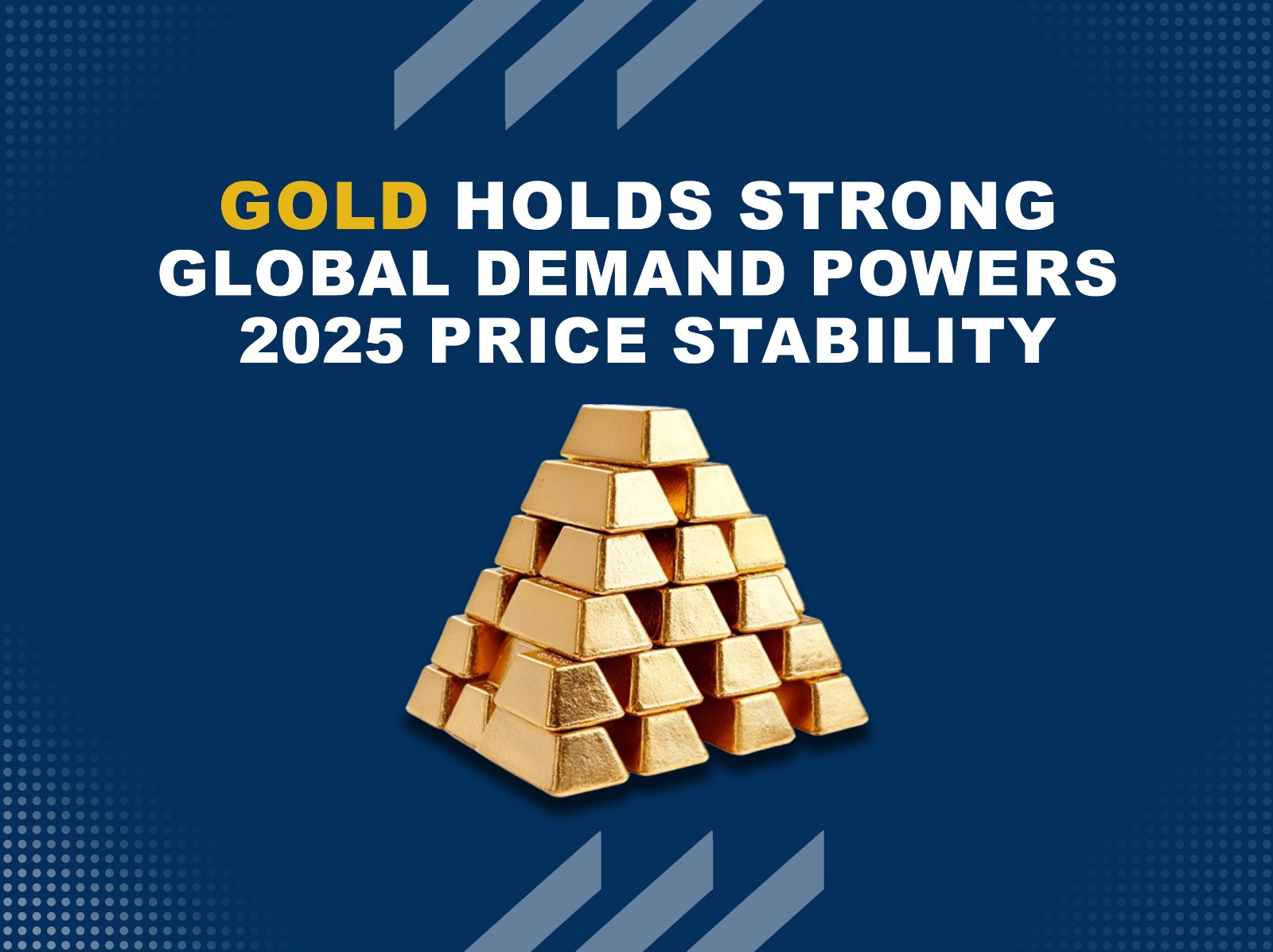Gold Prices Hold Firm as Investor Demand Strengthens Globally


Gold prices remained resilient on Monday, buoyed by robust investor demand across both retail and institutional sectors. As central banks maintain a cautious stance amid macroeconomic uncertainties, gold continues to serve as a strategic hedge for investors navigating volatile markets.
Spot gold held steady at $2,300 per ounce, while U.S. gold futures for August delivery hovered near $2,305 per ounce, indicating a consolidated price floor. Investors are closely monitoring global inflation trends, interest rate decisions, and geopolitical tensions—key drivers influencing gold's valuation trajectory.
Central banks, particularly in China, India, and Turkey, are aggressively adding to their gold reserves to diversify away from the dollar and fortify economic security. According to the World Gold Council, net purchases by central banks rose by over 1,100 tonnes in 2024—marking one of the strongest years on record.
“The diversification imperative remains high for central banks. Gold continues to offer stability and liquidity during global shifts,” — World Gold Council Analyst.
In the Indian subcontinent, gold demand typically spikes ahead of major festivals like Diwali and Dhanteras, further contributing to upward price pressure. Additionally, Middle Eastern markets have seen renewed retail interest driven by wedding seasons and higher oil revenues.
Exchange-Traded Funds (ETFs) and gold-backed derivatives are experiencing notable inflows as fund managers adjust their portfolios in anticipation of potential monetary easing:
Gold’s use in electronics, aerospace, and clean technology—especially in semiconductors and photovoltaic cells—has kept industrial demand stable. The integration of gold in advanced 5G and AI chips further contributes to its long-term intrinsic value.
From a technical perspective, gold remains in a long-term uptrend, supported by higher lows and a strong support zone near $2,250. If inflation data underperforms expectations or central banks pivot toward easing, analysts expect a potential breakout toward $2,400-$2,500 in Q3 2025.
Visit the website more information:- https://aiiongold.com/
Given ongoing economic uncertainty, persistent inflation, and shifts in global monetary policy, gold is well-positioned to retain its role as a cornerstone of diversified portfolios. The convergence of retail interest, central bank accumulation, and institutional confidence continues to underpin strong price fundamentals.
Gold has once again proven its resilience as a multifaceted asset class, supported by a broad base of global demand. With market sentiment firmly in favor of defensive assets and inflation-adjusted returns, we anticipate sustained investor appetite driving further strength in bullion markets through the second half of 2025.